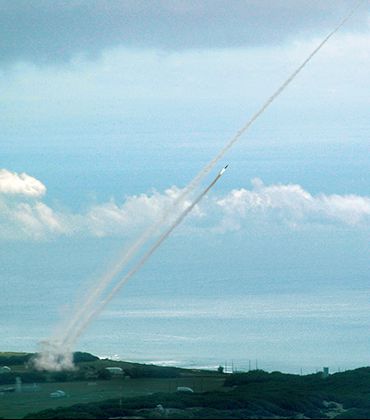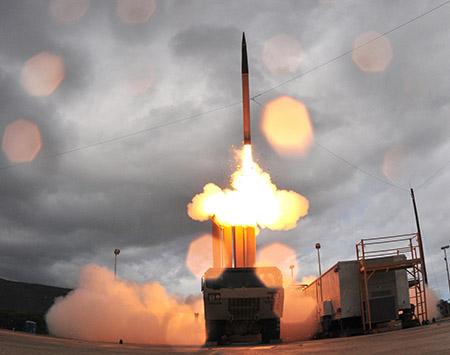South Korea could play an important role as a mediator between East and West, facilitating the construction of an ideal bridge between Confucianism and capitalism. It is a traditional company that enriches itself by exploiting technical implementations and globalization, but without becoming dependent on them.
The military alliance with the United States is a condition that makes it disliked by the most important center of power in the area: China.
The US presence is estimated at around 28.000 units, and this generates the need for US governance to protect compatriots as well as, obviously, South Korea. For this reason, the installation of a new anti-missile system is planned: The THAAD, Terminal High-Altitude Area Defense.
The system, also called "Kinetic Kill", can destroy the enemy missile with a not so easy air collision. Lockheed Martin, the manufacturer, declares a range of 200 km, an operating altitude of 150 km and a maximum speed of Mach 8.24.

The strong point is in the X-band radar "AN / TPY-2", developed and developed by Raytheon. It is estimated that this is the largest transportable X-band radar in the world. The current defense of South Korea is entrusted to an integration between the Aegis and Patriot systems, and they are placed under the joint command of both countries.
Mainly, the two weapon systems do not completely cover Korean airspace, as they do not have the capacity to intercept and kill an intercontinental high-altitude and long-distance carrier. In fact a lack of protection of the external layer that should be entrusted to the THAAD.
From a strictly military point of view, the installation of the weapon system is an act of prudence in contrast to the North Korean leader Kim Jong-un, but politically it could embody an initial decline in aspirations for a decisive role in Asia. The first conflicts would arise from the Chinese opposition to the South Korea-United States joint missile project. China is trying to reduce the centrality of the dollar as a reference currency for economic exchanges, it wants to establish itself as a financial power with the help of the New Silk Road and has launched a profound process of modernization of weapon systems.
 In fact, the Chinese viaticum to rise to great power, would suffer a decline where its nuclear deterrence was put in the background by the THAAD. The massive US military presence, with troops and vehicles stationed in the bases in South Korea, Japan and Guam, represents a threat to China, which, as a test of strength, has developed an intervention strategy supported by an arsenal large-scale missile capable of hitting air, land and US Navy units.
In fact, the Chinese viaticum to rise to great power, would suffer a decline where its nuclear deterrence was put in the background by the THAAD. The massive US military presence, with troops and vehicles stationed in the bases in South Korea, Japan and Guam, represents a threat to China, which, as a test of strength, has developed an intervention strategy supported by an arsenal large-scale missile capable of hitting air, land and US Navy units.
The military confrontation at a distance, forced the two contenders to additional expenses for the defense, but above all not definitive as not totally able to cover the potential targets. The Chinese strategy is commonly referred to as anti-access / area-denial, A2 / AD, ie it is a tactic that makes it difficult for the enemy to overcome ground defenses and denies access to territorial waters to hostile units.
The THAAD can be integrated with South Korea's existing defenses to complete the ban on any missile threat.
China could prevent the displacement of the weapon system by leveraging the financial and diplomatic component on South Korea, with which it has a privileged partnership relationship, and to demonstrate this are the talks for a free trade agreement on goods. Moreover, the Koreans need Chinese cooperation to pursue the ambitions of transition to a center of power, and to idealize a reunification with North Korea. So the THAAD stands as a balance on which to weigh what the priority is: trade with China, or US military protection. A choice that should have the denominator of not causing an absolute break with the two partners.
The result will be to prefigure South Korea's approach to strategic issues throughout East Asia, and perhaps entire Asia.
Giovanni Caprara
Source: Clint Hinote, “The US Missile System Driving a Wedge Between China, South Korea”. Defenseone, 2015

(photo: Lockheed Martin)












